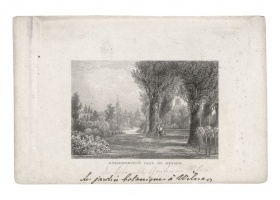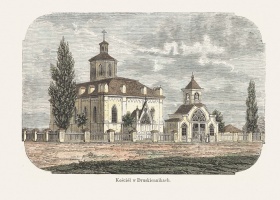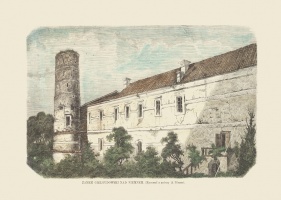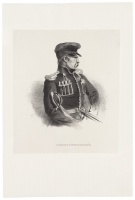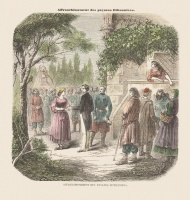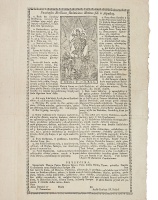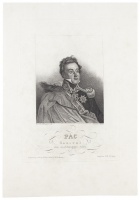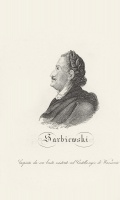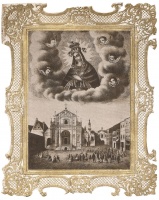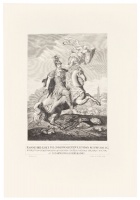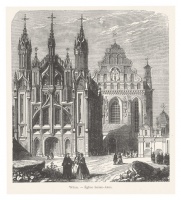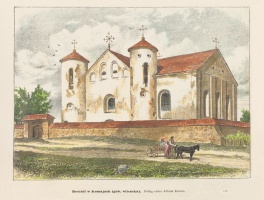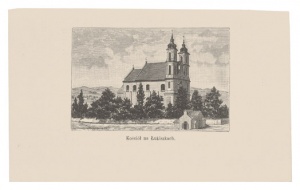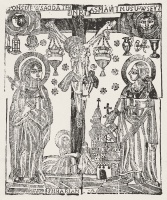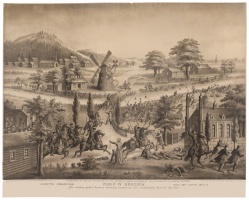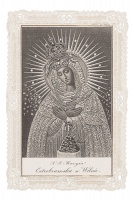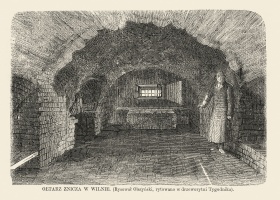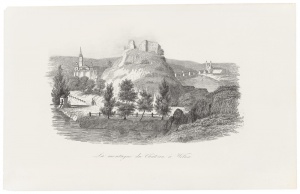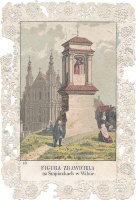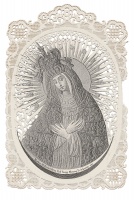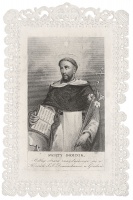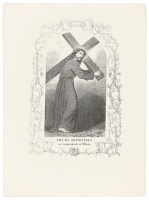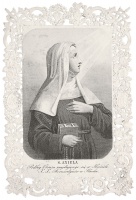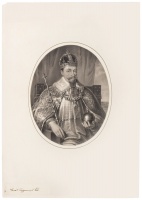
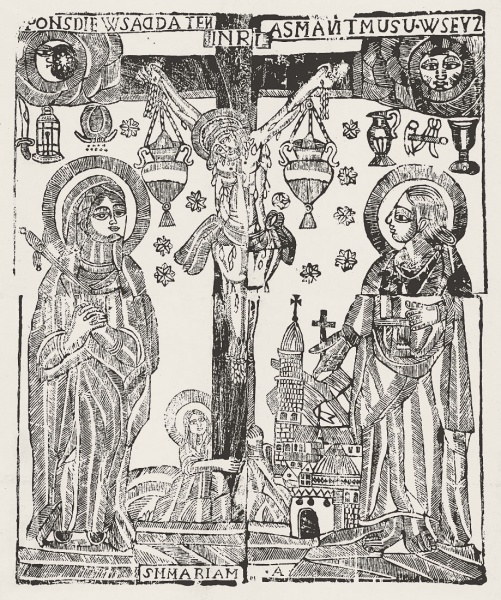

The Crucifixion
| Author: |
Unknown artist |
| Created: | second half of the 19th century |
| Material: | paper |
| Technique: | woodcut |
| Dimensions: | 71 × 60 cm |
| Signature: | inscription, top: PONSDIE WSADDA TEИ ASMAИT WSEVZMUSU |
Woodcuts printed on thin paper probably appeared in the late 18th century, and were popular until the end of the 19th century, when demand for them dropped significantly due to the spread of colour reproductions of religious pictures through mass-produced lithography. Smaller woodcuts by folk carvers were printed from one block, and the more popular larger ones used up to six blocks. These woodcuts were like simple but monumental line drawings. The rough figures of saints, the poor proportions and perspective, and the free arrangement of details give a quaint impression. The central figure was surrounded with architectural and landscape features, heavenly bodies and floral decoration, in an attempt to avoid empty spaces. Woodcuts usually came in bright colours. As in painting, the work of the more skilled craftsmen stands out from the rest.
Woodcuts were produced during the ban on printing in Lithuanian, so in order to mislead the censors, captions were written in Polish. Many were copied, and therefore mistakes frequently appeared in them. Some inscriptions were even incomprehensible, as the engravers were often illiterate. Engravers are thought to have been religious carvers who acquired engraving and printing skills.
This particular woodcut was printed on paper from four wooden blocks. An unknown self-taught artist in the 19th century portrayed the Crucifixion in the centre of the composition, with St Mary Magdalene below it kneeling and embracing the cross. On the left is the figure of the Mother of Sorrows, and on the right is the monumental figure of St John the Evangelist. The woodcut also has various symbolic and architectural details.
Text author Skaidrė Urbonienė
Source: Law firm Valiunas Ellex art album HEAVEN AND BEYOND (2016). Compiler Dalia Vasiliūnienė. Text authors Dalia Vasiliūnienė, Skaidrė UrbonienėExpositions: “Heaven and Beyond. Works of religious art from the collection of Rolandas Valiūnas and the law firm Valiunas Ellex“, 31 May–24 September 2016, Church Heritage Museum, Vilnius (curators Dalia Vasiliūnienė, Skaidrė Urbonienė)







